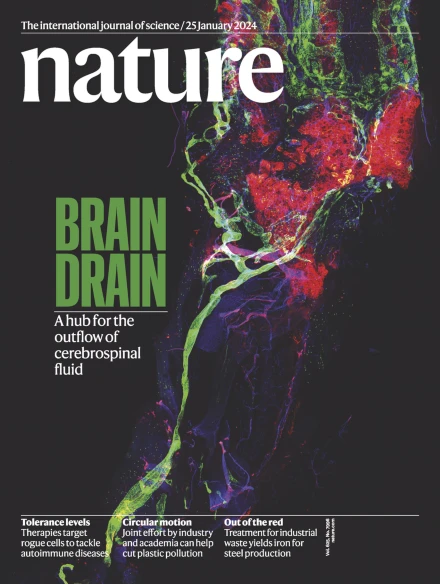Quantum correlations of spontaneous two-photon emission from a quantum dot
IF 48.5
1区 综合性期刊
Q1 MULTIDISCIPLINARY SCIENCES
引用次数: 0
Abstract
Spontaneous two-photon emission (STPE) is a second-order quantum radiation process with implications in astrophysics1, atomic physics2 and quantum technology3. In particular, on-demand STPE from single quantum emitters has long been predicted to revolutionize photonic quantum science and technology4,5. Here we report STPE with brightness comparable to that of competing single-photon radiation from a single semiconductor quantum dot deterministically coupled to a high-quality micropillar cavity. This is because of strong vacuum fluctuations in the microcavity, which drive a biexciton directly to the ground state. We show the quantum nature associated with STPE in the cavity quantum electrodynamics regime using photon statistics measurements. Furthermore, STPE is exploited to build unconventional entangled quantum light sources that can simultaneously achieve near-unity entanglement fidelity for spontaneous parametric down-conversion sources and on-demand photon emission for atomic quantum emitters. Our work provides insights into the two-photon process in the quantum regime, which could empower photonic quantum technology with nonlinear quantum radiation. Quantum correlations of spontaneous two-photon emission emitted from a bright quantum dot device are revealed, facilitating the creation of entangled photons with near-unity fidelity.


量子点自发双光子发射的量子相关性
自发双光子发射(STPE)是一种二阶量子辐射过程,在天体物理学、原子物理学和量子技术中具有重要意义。特别是,单量子发射体的按需STPE长期以来一直被预测将彻底改变光子量子科学和技术4,5。在这里,我们报告了STPE的亮度与单个半导体量子点与高质量微柱腔确定性耦合的竞争单光子辐射相当。这是因为微腔中强烈的真空波动,将双激子直接驱动到基态。我们利用光子统计测量显示了与腔量子电动力学体系中STPE相关的量子性质。此外,利用STPE构建非常规纠缠量子光源,可以同时实现自发参数下转换源的近单位纠缠保真度和原子量子发射器的按需光子发射。我们的工作提供了对量子状态下双光子过程的见解,这可能使光子量子技术具有非线性量子辐射。
本文章由计算机程序翻译,如有差异,请以英文原文为准。
求助全文
约1分钟内获得全文
求助全文
来源期刊

Nature
综合性期刊-综合性期刊
CiteScore
90.00
自引率
1.20%
发文量
3652
审稿时长
3 months
期刊介绍:
Nature is a prestigious international journal that publishes peer-reviewed research in various scientific and technological fields. The selection of articles is based on criteria such as originality, importance, interdisciplinary relevance, timeliness, accessibility, elegance, and surprising conclusions. In addition to showcasing significant scientific advances, Nature delivers rapid, authoritative, insightful news, and interpretation of current and upcoming trends impacting science, scientists, and the broader public. The journal serves a dual purpose: firstly, to promptly share noteworthy scientific advances and foster discussions among scientists, and secondly, to ensure the swift dissemination of scientific results globally, emphasizing their significance for knowledge, culture, and daily life.
 求助内容:
求助内容: 应助结果提醒方式:
应助结果提醒方式:


